Schedule
Rice Crop Schedule
| Product Name | Fertilizers | |||||
|---|---|---|---|---|---|---|
| Poornima Kit | NPK Caps | Humigrow Nano Powder | Alp | Sonha-Bihan | ||
| Humic Acid | Chelated Multi-micronutrient |
PGP/PGR | ||||
| Land Reparation | week -2 | |||||
| Soil Treatment | week -1 | |||||
| Before Seed Sowing | week 0 | |||||
| Germination | week 1 | 1 Kit | ||||
| Fruiting stage & Vegetative Flowering |
week 2 | |||||
| week 3 | ||||||
| week 4 | ||||||
| week 5 | 2 Caps | 120 gm | ||||
| week 6 | ||||||
| week 7 | ||||||
| week 8 | 250gm | 250gm | ||||
| week 9 | 2 Caps | 120 gm | ||||
| week 10 | ||||||
| week 11 | ||||||
| week 12 | ||||||
| Grain Formation Flowering/ |
week 13 | |||||
| week 14 | ||||||
| week 15 | ||||||
| week 16 | ||||||
| Harvesting | ||||||
| Total Quantity | 1 Kit | 4 Caps | 240gm | 250gm | 250gm | |
| Broadcast | |
| Top Dressing | |
| Basal Dressing | |
| Soil Application | |
| Spray | |
| * | Optional |
NOTE: For the first year donot immidietaly substitute 100% chemical fertilizer with the SIESTO GREEN products, as the soil is used to chemical fertilizer, it may affect the output. So the best way to substitute is by reducing 50% of chemical input in the first year, 25% the following 2nd year, & then another 10% by the 3rd year. After the 3rd year use synthetic fertilizer / inorganic fertilizer if their is a requirement depending on the soil health.
CROP SCHEDULE FOR RICE
Sr. No.
Treatment / Application
Product
Dose / Acre
APPLICATION
Management
1
Vegetative – Dissolve in 20 to 200 ltr. of water as required for 1 acre of land and apply through Drip Irrigation or drench.
POORNIMA KIT
1 KIT
Apply it in week 1
It is a balanced form of nutrients that includes NPK, Zinc, Cropforce NP, Humigrow NP, and Mycorrhiza NP
2
Vegetative – Mix all with the required amount of water and apply through drip irrigation, flood irrigation, or drenching as per farmer’s availability
NPK + Humigrow
2 Caps + 120gm
Apply it in week 5 & 9
It is a balanced form of Nutrition that includes NPK.
3
Flowering – Mix both in 20 – 200 liters of water as per requirement and spray it in the plants.
ALP + Sonhabihan
250gm + 250gm/200 lit. of water
Apply it in week 8
It is a Micronutrient and PGP that helps in Growth, Fruit set, and the quality of the produce.
PEST ATTACKS, BACTERIAL, OR FUNGAL MANAGEMENT
PEST / BACTERIAL / FUNGAL
IDENTIFICATION IN CROP
SYMPTOMS
SUGGESTED PRODUCT
Bacterial Blight
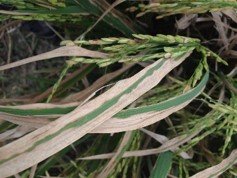 Yellowing or wilting of young leaves, and white streaking on the midrib.
Indofa + Bacillus
Sheath Blight
Yellowing or wilting of young leaves, and white streaking on the midrib.
Indofa + Bacillus
Sheath Blight
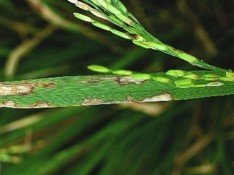 Leaf-sheath and leaf blade of the plant.
Indofa + Bacillus
False Smut
Leaf-sheath and leaf blade of the plant.
Indofa + Bacillus
False Smut
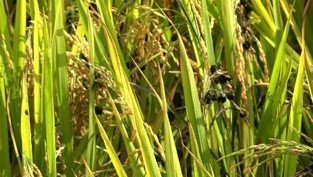 It can cause yellowish-green lesions on the leaves, stems, and husks of the rice plant.
Bacillus + BT
Stem rot
It can cause yellowish-green lesions on the leaves, stems, and husks of the rice plant.
Bacillus + BT
Stem rot
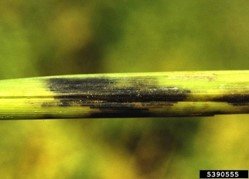 White, Cottony growths on the stem of the rice plants. The leaves of the rice plant may also yellow, wilt, and die.
Indofa
Panicle Blight
White, Cottony growths on the stem of the rice plants. The leaves of the rice plant may also yellow, wilt, and die.
Indofa
Panicle Blight
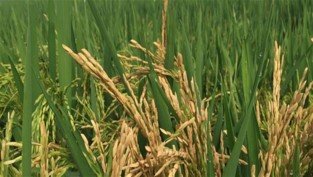 The most visible symptom of panicle blight is the death of the panicles (the flowering head of the plant), which turn white, dry up, and fall off.
Indofa + Bacillus
Brown Spot
The most visible symptom of panicle blight is the death of the panicles (the flowering head of the plant), which turn white, dry up, and fall off.
Indofa + Bacillus
Brown Spot
 Yellowish-brown spots on the leaves stems, and grains of rice plants. These spots may become enlarged and eventually become dark brown with a yellow halo.
Indofa
Stem Borer
Yellowish-brown spots on the leaves stems, and grains of rice plants. These spots may become enlarged and eventually become dark brown with a yellow halo.
Indofa
Stem Borer
 Yellowing and wilting of leaves, holes in the stem, lodging of the plant, decrease in grain filling, death of the plant, and frass (insect excrement) on the stem.
Meta + BT + Bacillus
Green Leafhopper
Yellowing and wilting of leaves, holes in the stem, lodging of the plant, decrease in grain filling, death of the plant, and frass (insect excrement) on the stem.
Meta + BT + Bacillus
Green Leafhopper
 Stunted plants and reduced vigor, reduced number of productive tillers, withering, or complete plant drying.
Meta + Traps / Lifeline
Plant Hopper
Stunted plants and reduced vigor, reduced number of productive tillers, withering, or complete plant drying.
Meta + Traps / Lifeline
Plant Hopper
 Hopper burn or yellowing, browning, and drying of plants, ovipositional marks exposing the plant to fungal and bacterial infections, presence of honeydew and sooty molds in the bases of areas infected plants with a ragged stunt or grassy stunt virus disease.
Meta + Traps / Lifeline
Gall Midge
Hopper burn or yellowing, browning, and drying of plants, ovipositional marks exposing the plant to fungal and bacterial infections, presence of honeydew and sooty molds in the bases of areas infected plants with a ragged stunt or grassy stunt virus disease.
Meta + Traps / Lifeline
Gall Midge
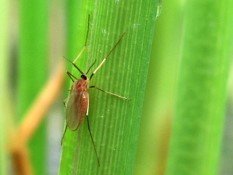 The larvae of the gall midge feed on the growing point of the rice plant and cause the death of the central shoot.
Traps + Lifeline + Meta
Grains Sucking Bugs
The larvae of the gall midge feed on the growing point of the rice plant and cause the death of the central shoot.
Traps + Lifeline + Meta
Grains Sucking Bugs
 The bugs feed on the developing grains and cause the formation of small, yellowish, or brownish spots on the grains.
Traps + Lifeline + Meta
The bugs feed on the developing grains and cause the formation of small, yellowish, or brownish spots on the grains.
Traps + Lifeline + Meta
 Yellowing or wilting of young leaves, and white streaking on the midrib.
Indofa + Bacillus
Sheath Blight
Yellowing or wilting of young leaves, and white streaking on the midrib.
Indofa + Bacillus
Sheath Blight
 Leaf-sheath and leaf blade of the plant.
Indofa + Bacillus
False Smut
Leaf-sheath and leaf blade of the plant.
Indofa + Bacillus
False Smut
 It can cause yellowish-green lesions on the leaves, stems, and husks of the rice plant.
Bacillus + BT
Stem rot
It can cause yellowish-green lesions on the leaves, stems, and husks of the rice plant.
Bacillus + BT
Stem rot
 White, Cottony growths on the stem of the rice plants. The leaves of the rice plant may also yellow, wilt, and die.
Indofa
Panicle Blight
White, Cottony growths on the stem of the rice plants. The leaves of the rice plant may also yellow, wilt, and die.
Indofa
Panicle Blight
 The most visible symptom of panicle blight is the death of the panicles (the flowering head of the plant), which turn white, dry up, and fall off.
Indofa + Bacillus
Brown Spot
The most visible symptom of panicle blight is the death of the panicles (the flowering head of the plant), which turn white, dry up, and fall off.
Indofa + Bacillus
Brown Spot
 Yellowish-brown spots on the leaves stems, and grains of rice plants. These spots may become enlarged and eventually become dark brown with a yellow halo.
Indofa
Stem Borer
Yellowish-brown spots on the leaves stems, and grains of rice plants. These spots may become enlarged and eventually become dark brown with a yellow halo.
Indofa
Stem Borer
 Yellowing and wilting of leaves, holes in the stem, lodging of the plant, decrease in grain filling, death of the plant, and frass (insect excrement) on the stem.
Meta + BT + Bacillus
Green Leafhopper
Yellowing and wilting of leaves, holes in the stem, lodging of the plant, decrease in grain filling, death of the plant, and frass (insect excrement) on the stem.
Meta + BT + Bacillus
Green Leafhopper
 Stunted plants and reduced vigor, reduced number of productive tillers, withering, or complete plant drying.
Meta + Traps / Lifeline
Plant Hopper
Stunted plants and reduced vigor, reduced number of productive tillers, withering, or complete plant drying.
Meta + Traps / Lifeline
Plant Hopper
 Hopper burn or yellowing, browning, and drying of plants, ovipositional marks exposing the plant to fungal and bacterial infections, presence of honeydew and sooty molds in the bases of areas infected plants with a ragged stunt or grassy stunt virus disease.
Meta + Traps / Lifeline
Gall Midge
Hopper burn or yellowing, browning, and drying of plants, ovipositional marks exposing the plant to fungal and bacterial infections, presence of honeydew and sooty molds in the bases of areas infected plants with a ragged stunt or grassy stunt virus disease.
Meta + Traps / Lifeline
Gall Midge
 The larvae of the gall midge feed on the growing point of the rice plant and cause the death of the central shoot.
Traps + Lifeline + Meta
Grains Sucking Bugs
The larvae of the gall midge feed on the growing point of the rice plant and cause the death of the central shoot.
Traps + Lifeline + Meta
Grains Sucking Bugs
 The bugs feed on the developing grains and cause the formation of small, yellowish, or brownish spots on the grains.
Traps + Lifeline + Meta
The bugs feed on the developing grains and cause the formation of small, yellowish, or brownish spots on the grains.
Traps + Lifeline + Meta
NUTRITION DEFICIENCY IN PADDY CROP
NUTRIENT
IDENTIFICATION
SYMPTOMS
SUGGESTED PRODUCT
Nitrogen Deficiency
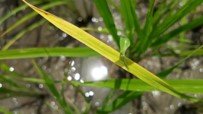 Discoloration of leaves – pale green, light red petioles and veins. Stunted leaf Growth
Azoto Caps
Potassium Deficiency
Discoloration of leaves – pale green, light red petioles and veins. Stunted leaf Growth
Azoto Caps
Potassium Deficiency
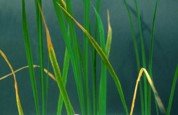 Yellowing and drying of leaf tips and margins, necrosis or death of leaf tips and margins, reduced tillering, and brown spots on leaves are symptoms of potassium deficiency in rice fields.
Potash Grow Caps
Phosphorus Deficiency
Yellowing and drying of leaf tips and margins, necrosis or death of leaf tips and margins, reduced tillering, and brown spots on leaves are symptoms of potassium deficiency in rice fields.
Potash Grow Caps
Phosphorus Deficiency
 The symptoms of phosphorus deficiency in rice fields include stunted growth, reduced tillering, and the development of reddish-purple leaves.
PSB Plus Caps
Zinc Deficiency
The symptoms of phosphorus deficiency in rice fields include stunted growth, reduced tillering, and the development of reddish-purple leaves.
PSB Plus Caps
Zinc Deficiency
 Dusty brown spots on the upper leaves of stunted plants.
Zinc Grow Caps
Boron Deficiency
Dusty brown spots on the upper leaves of stunted plants.
Zinc Grow Caps
Boron Deficiency
 It leads to a reduction in plant height, death of growing points, and white discoloration and rolling of leaf tips.
Alp
Sulphur Deficiency
It leads to a reduction in plant height, death of growing points, and white discoloration and rolling of leaf tips.
Alp
Sulphur Deficiency
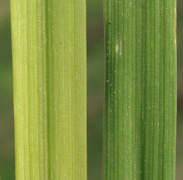 It can lead to delayed plant development and maturity.
Sulphur Caps
It can lead to delayed plant development and maturity.
Sulphur Caps
 Discoloration of leaves – pale green, light red petioles and veins. Stunted leaf Growth
Azoto Caps
Potassium Deficiency
Discoloration of leaves – pale green, light red petioles and veins. Stunted leaf Growth
Azoto Caps
Potassium Deficiency
 Yellowing and drying of leaf tips and margins, necrosis or death of leaf tips and margins, reduced tillering, and brown spots on leaves are symptoms of potassium deficiency in rice fields.
Potash Grow Caps
Phosphorus Deficiency
Yellowing and drying of leaf tips and margins, necrosis or death of leaf tips and margins, reduced tillering, and brown spots on leaves are symptoms of potassium deficiency in rice fields.
Potash Grow Caps
Phosphorus Deficiency
 The symptoms of phosphorus deficiency in rice fields include stunted growth, reduced tillering, and the development of reddish-purple leaves.
PSB Plus Caps
Zinc Deficiency
The symptoms of phosphorus deficiency in rice fields include stunted growth, reduced tillering, and the development of reddish-purple leaves.
PSB Plus Caps
Zinc Deficiency
 Dusty brown spots on the upper leaves of stunted plants.
Zinc Grow Caps
Boron Deficiency
Dusty brown spots on the upper leaves of stunted plants.
Zinc Grow Caps
Boron Deficiency
 It leads to a reduction in plant height, death of growing points, and white discoloration and rolling of leaf tips.
Alp
Sulphur Deficiency
It leads to a reduction in plant height, death of growing points, and white discoloration and rolling of leaf tips.
Alp
Sulphur Deficiency
 It can lead to delayed plant development and maturity.
Sulphur Caps
It can lead to delayed plant development and maturity.
Sulphur Caps


